WD Class Baldwin 2-6-2T No.
357
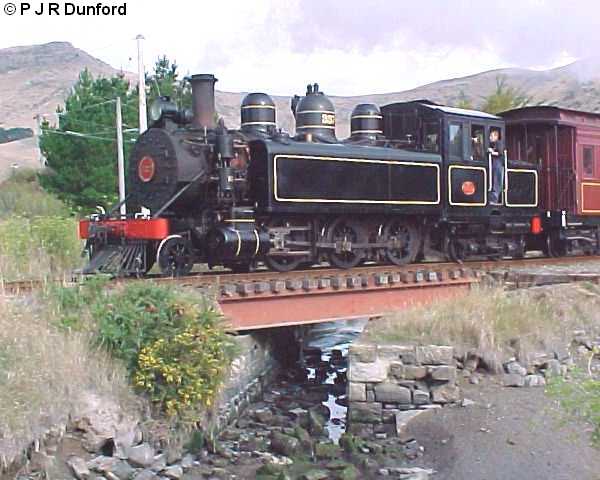
Wd Class 2-6-4T No. 357
Wd357 is the sole operational survivor of 111 Baldwin Locomotive Works locomotives that
were used in New Zealand. In fact for a number of years Wd357 was the sole surviving
Baldwin railway locomotive of any class (several other Baldwins have since been recovered
from locomotive dumps).
One of 18 of a class built in 1901, Wd357 is one of four originally allocated to South
Island service. The Wd class was versatile, working all types of trains in regular service
with New Zealand Government Railways until 1935, when she entered service with the Timaru
Harbour Board, working its quarry until 1966.
Wd357 was donated to Canterbury Railway Society in 1967, and became the first
locomotive in steam at Ferrymead Railway on 11 March, 1967.
W Class New Zealand Railways 2-6-2 No. 192
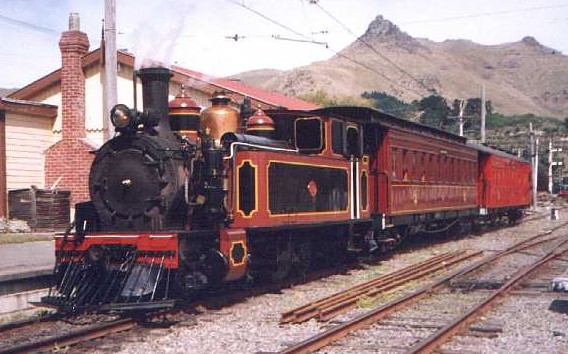
W Class NZR 2-6-2 No. 192
W192 is a 2-6-2 tank engine and was built in
Christchurch in 1887. She has a place in New Zealand railway history as the first
locomotive built by the Government Railway Workshops at Addington and is one of only two
of that class that were built. W192 worked mainly in the South Island, hauling coal trains
on the West Coast.
Cb Class 0-4+4-0 Geared Locomotive No. 113
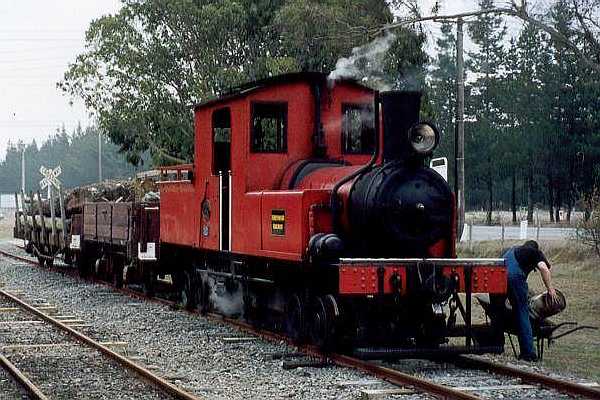
Cb Class 0-4+0-4 Geared Loco No. 113
Built by A & G Price at their Thames Works in 1924, it is an example of a geared
locomotive used on bush logging tramways. It is powered by a two cylinder marine steam
engine situated in the cab beside the driver, coupled through a two speed gearbox to a
universal shaft and gear drives to the wheels. The locomotive was donated to Ferrymead by
the New Forest Sawmilling Company of Ngahere in the 1960s. Repaired and first steamed at
Ferrymead in 1975, it was further overhauled in 1981 and painted blue.
Because of its slow speed it has mainly
been used as a work train and novelty passenger service engine and also hauled a number of
dining trains that operated in the late 1980s. After a recent overhaul it was repainted
red.
It won a National Federation of Railway
Societies restoration award in 1984.
C Class New Zealand
Railways 2-6-2 No. 864
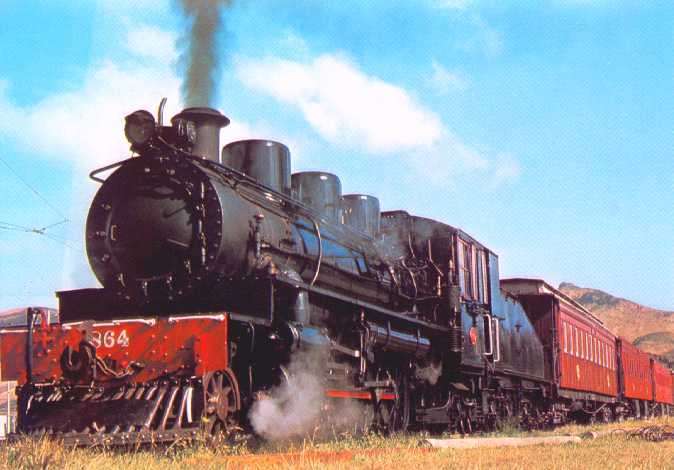
C864
C864 was built by New Zealand Government Railways at Hillside Workshops in Dunedin
in 1931. She is one of 24 built as heavy shunting engines for use at major freight
terminals of both islands. They were also used on short haul trains and saw service on
many of the branch lines that used to exist in the Christchurch area.
C864 was purchased by the Canterbury Branch of the New Zealand Railway and
Locomotive Society in 1971, and was moved to Ferrymead the following year. After some
minor work the locomotive began running in June, 1972, with further repairs in 1976-77.
For many years it was the main operating locomotive on the Railway.
Because of higher running costs, in recent years the locomotive has only run on special
days, including various steam shuttles between Christchurch and Ferrymead. It visited the
Weka Pass Railway in conjunction with the National Federation of Railway Societies
Convention in 1989 and operated further shuttle services in 1990.
D Class No. 140
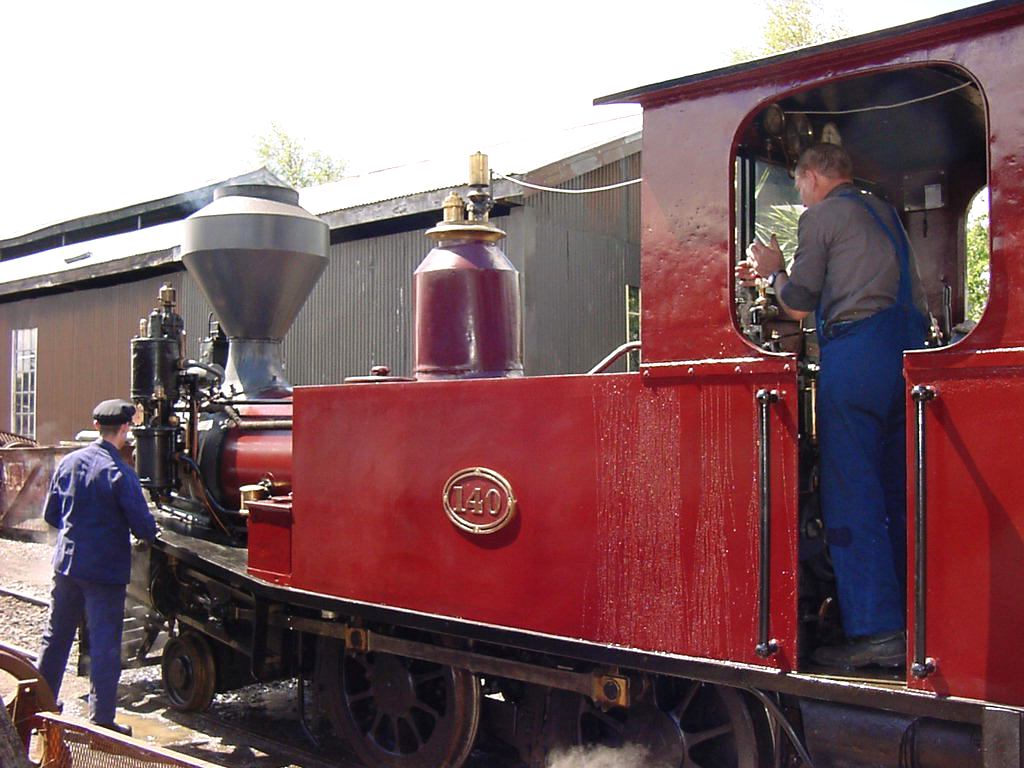
D140
Locomotive
D140 was built by Scott Brothers in Christchurch in 1887. It bore their works number 36
and was one of ten D engines built between 1884 and 1887 by this early engineering
company.
The D Class locomotives were built to supplement twenty-two similar
engines imported from Scotland. They are a small general purpose tank locomotive with a
small leading wheel set and four coupled driving wheels, each thirty-six inches in
diameter. The D Class weighs seventeen tons, is twenty-wo feet in length and is
characterised by its distinctive and somewhat unusual inclined cylinders and running
plates.
Engines of this class were used extensively to haul trains between
Christchurch and Lyttelton. They were all taken out of service and scrapped or disposed of
by 1927 and replaced by newer and more powerful models.
Locomotive D140 has a long association and played a part in the development of
Canterbury, serving as part of the early New Zealand Railways locomotive fleet until it
was taken out of service and sold in 1920.
F Class 0-6-2T No. 13 (and No. 12)
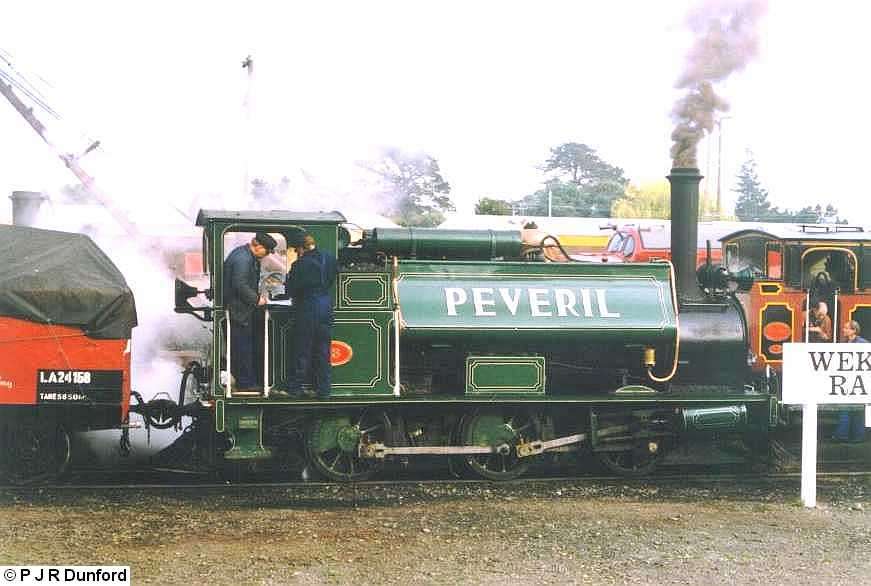
F Class 0-6-2T No. 13
The mainline locomotives of their day, 88 of the F class locomotives were
constructed by various builders in the 1870s. 25 of the class were given names from the
novels of Sir Walter Scott, and these were later revived by New Zealand Government
Railways during the last years of the F's service. Many of this class were purchased by
industry, and saw many more years of service in this capacity.
F13 was built in 1872 by Neilson & Co, entering service in
1873. Originally Otago Railways' No. 8 "Edie Ochiltree", it was renumbered F36
in 1877 and then F13 in 1885. Based at Christchurch for many years, it was named
"Peveril" in 1958. Withdrawn from service in 1964 and stored at Arthurs Pass, it
was donated by the NZR to Ferrymead in 1967, and was stored in the tram barn until 1973.
After some years on display, F13 was restored to full operating order between 1982 and
1984, and was the mainstay of passenger services for a number of years. It won a National
Federation of Locomotive Societies restoration award in 1988. The locomotive has travelled
out onto the NZR main line on several occasions, running local services out of Oamaru in
1987, shuttle trains between Christchurch and Papanui in conjunction with the 1990
Telethon, and operating at a Lyttelton Port Open Day in 1987.
F13 was taken out of service in the mid 90s for its 10 year
survey but was granted a special permit to enable it to participate in the 1999 Waipara
Vintage Festival. It is now partway through an overhaul with work being done on the boiler
and wheels. It is scheduled for completion after work on D140 is finished.
F12 was built by the Yorkshire Engine Company in 1874. It
worked in NZR service until 1957. It was then sold to Waitaki Farmers Freezing Company for
use at their Pukeuri works, near Oamaru, where it was in use until 1968. Since arriving at
Ferrymead the loco has been used as a parts supply for both F13 and F111 at Ocean Beach
Railway. Although recognisable as an F it is presently missing a number of components
including the cab.
Wf Class 2-6-4T No. 393
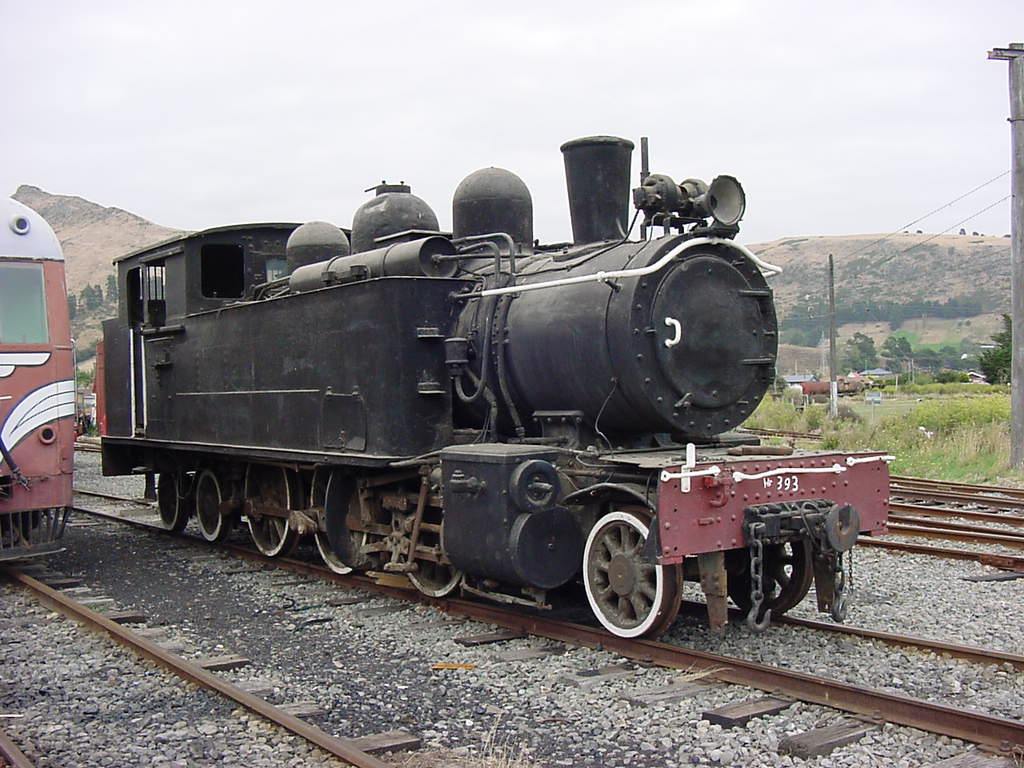
Wf393
A tank version of the C class 2-6-2 locomotive, Wf393 was built at the Thames, New
Zealand works of A&G Price Ltd. in 1904. A total of 41 of this class were constructed
both by the New Zealand Government Railways workshops and by Price mainly for suburban
services. This class was also used on the isolated Nelson-Glenhope line and during World
War II a number were sold to Tasmanian Railways.
Throughout their long life these locomotives worked on most parts of the NZR system,
and proved a very versatile engine. Wf393 was withdrawn from service in 1967, and donated
by the Minister of Railways at that time to the Canterbury Branch of the New Zealand
Railway and Locomotive Society. The locomotive has been stored since arrival and is now
displayed in the Steam Shed at Ferrymead.
Heisler 0-4+4-0 Geared Locomotive No. 14699
14699 was built by Stearns Manufacturing Co in the USA in 1922 and was purchased by the
Bartholomew Land & Timber Company of Rotorua.
It is the second example of a geared logging locomotive at Ferrymead, with two
cylinders inclined in a V under the boiler. These drive a shaft connected through
universal joints and gears to the axles of the two 4-wheel bogies. Though not a speedy
engine, their great hauling capacity made them ideally suited to lumber haulage railways.
In 1951, 14699 was purchased by Ogilvie & Co of Greymouth for use on their bush
tramway. It was subsequently sold to the New Forest Sawmilling Company who donated it to
the Canterbury Railway Society in 1966. It was operated at Ferrymead for awhile and is now
stored.
Barclay 0-4-2T No. 1894
Built in 1926 by Andrew Barclay & Son, this tiny 10 ton locomotive spent its entire
life on the bush tramway system of the Lake Brunner Sawmilling Company. It was retired in
1961 and donated by the then managing directory of the company, Mr A Brownlee, to the
Canterbury Railway Society.
The locomotive was dismantled for overhaul in the front garden of a Christchurch house
before it eventually was moved to Ferrymead. It is currently dismantled and stored.
Bagnall 0-4-0T No 1857
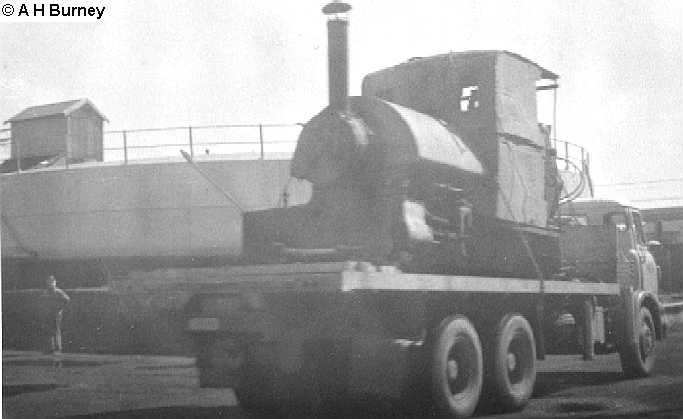
Bagnall 0-4-2T No. 1857
Built by Bagnall & Son in 1909, this diminutive (7.9 tonne) saddle tank locomotive
was used by the Christchurch Gas Coal and Coke Company at the Christchurch Gas Works. The
loco was used to shunt wagons of coal delivered to the works by the NZR until 1970, when
it was donated to the Canterbury Railway Society.
As restoration of the loco was not high on the list of priorities, it was leased to the
Pleasant Point Railway in 1979. However the Bagnall was not restored while at Pleasant
Point and returned some 15 years later to Ferrymead, where it has since been stored in a
dismantled condition.
Manning-Wardle 0-4-0T No. 1841
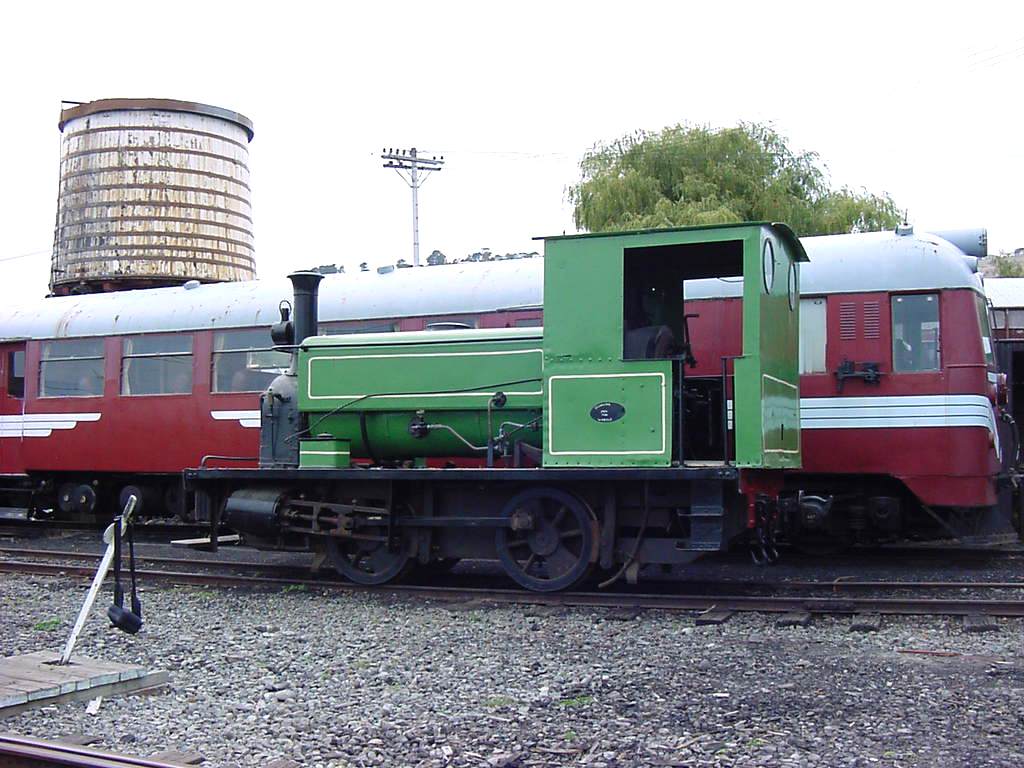
Manning-Wardle 0-4-0T No. 1841
Built by Manning-Wardle at their Leeds, UK works in 1914, No. 1841 was one of a pair of
small 12-ton locos imported by the Christchurch Meat Company Ltd. One was used at their
Islington works near Christchurch and the other at their Imlay works near Wanganui. 1841
remained in service until 1975 when it was donated to Ferrymead, and used as part of the
passenger service fleet.
The locomotive continued in service at Ferrymead into the 1980s, venturing out onto the
fledgling Weka Pass Railway in 1983. It was eventually withdrawn and awaits major boiler
work and is currently on display.
Kb Class New Zealand Government Railways 4-8-4 No. 968
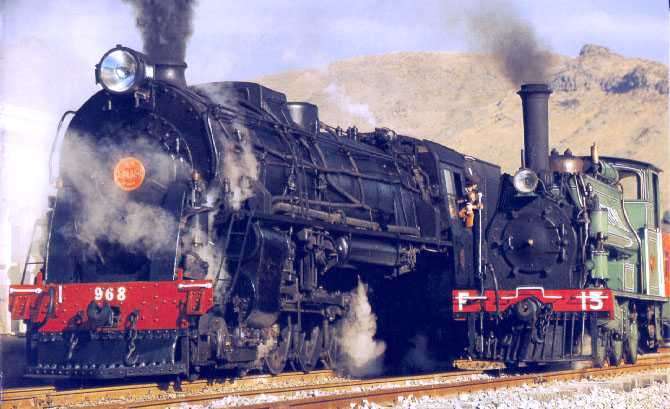
Kb Class NZR 4-8-4 No. 968
Kb968 was constructed by New Zealand Government
Railways at their Hillside Workshops in Dunedin in 1939. A development of the earlier K
and Ka classes, the Kb was fitted with a booster bogie under the cab, which increased the
tractive effort by 6,000lb. Originally six of these locomotives were built, complete with
streamlined casing around the front of the boiler. This was removed in 1948.
For most of their lives, these locomotives hauled
heavy freight and passenger trains on the Springfield-Arthurs Pass sections of the Midland
Line through the Southern Alps, although they did on occasion venture onto the South
Island Main Trunk.
Withdrawn in 1969, this locomotive was purchased
with the assistance of donations from the schoolchildren of Canterbury, and was moved to
the Ferrymead site in 1978. Because of its appetite for coal, Kb968 was steamed only on
rare occasions.
Kb968 is now leased to the Mainline Steam Trust
who are considering overhauling it for excursion service.
